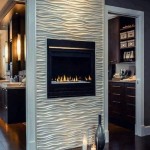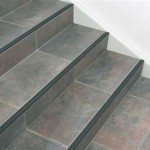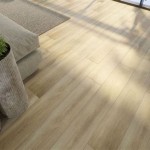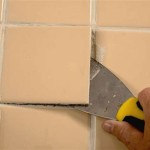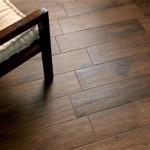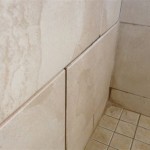Create A New Dimension In Your Home With Mirror Wall Tiles Design
Mirror wall tiles represent a versatile design element capable of transforming the ambiance and perceived space within residential and commercial properties. These tiles offer more than mere reflection; they contribute to a brighter, more spacious feel while adding a touch of contemporary elegance to any room. The strategic application of mirror wall tiles can dramatically alter a room's visual dynamics, providing an illusion of depth and expanding limited areas.
The selection and implementation of mirror wall tiles demand careful consideration of several factors, including tile size, shape, arrangement, and the surrounding décor. The design potential is extensive, ranging from subtle enhancements to bold statements. Understanding the nuances of mirror wall tile design is crucial for achieving the desired aesthetic and maximizing the functional benefits.
Amplifying Space and Light: The Core Benefits
The primary advantage of incorporating mirror wall tiles lies in their ability to amplify both space and light. Mirrors, by their very nature, reflect light, effectively doubling the amount of illumination within a room. This is particularly beneficial in areas with limited natural light, such as hallways, bathrooms, or basements. The reflective surface bounces light around the room, creating a brighter and more inviting atmosphere.
Furthermore, the reflective quality of mirror tiles creates an optical illusion of greater space. By reflecting the opposite wall, or even just a portion of the room, the tiles visually extend the boundaries of the area. This is particularly effective in smaller rooms, where the added depth can make a significant difference in the overall feel. The strategic placement of mirror tiles can make a small room feel significantly larger and less confined.
The effect is not solely limited to small spaces; even larger rooms can benefit from the strategic use of mirror wall tiles. They can be used to highlight specific architectural features, create focal points, or add a touch of drama to the overall design. The key is to carefully consider the placement and arrangement of the tiles to maximize their impact on the room's spatial perception and light distribution.
Material, Shape, and Installation Considerations
The material composition of mirror wall tiles primarily involves glass, often with a silver or aluminum backing to create the reflective surface. The quality of the glass and the coating directly impacts the clarity and longevity of the mirror. Higher-quality materials provide a clearer reflection and are less prone to scratches and degradation over time.
Shapes and sizes of mirror tiles vary significantly, offering a wide range of design possibilities. Square and rectangular tiles are common choices, providing a clean and modern aesthetic. However, more unconventional shapes, such as hexagons, triangles, or even curved tiles, can add a unique and artistic touch. The choice of shape should complement the overall design scheme and the architectural style of the room.
Installation requires precision and attention to detail. The surface onto which the tiles are applied must be smooth, clean, and structurally sound. Uneven surfaces can lead to distorted reflections and potential damage to the tiles. A strong adhesive specifically designed for mirrors is essential to ensure a secure and long-lasting bond. Grouting, if used, should be carefully selected to complement the tiles and prevent moisture penetration. Professional installation is often recommended, particularly for complex designs or larger installations, to ensure a flawless finish and prevent potential issues.
Maintenance considerations are also important. Mirror tiles are relatively easy to clean, requiring only a soft cloth and a mild glass cleaner. Abrasive cleaners should be avoided, as they can scratch the reflective surface. Regular cleaning helps to maintain the clarity and brilliance of the mirrors, ensuring they continue to enhance the room's aesthetic.
Design Applications and Style Integration
Mirror wall tiles can be integrated into a wide variety of design styles, from minimalist and modern to traditional and opulent. The key is to carefully consider the overall aesthetic and select tiles that complement the existing décor. In minimalist designs, large, frameless mirror tiles can create a clean and seamless look. In more traditional settings, smaller, beveled tiles can add a touch of elegance and sophistication.
Specific applications of mirror wall tiles are numerous. In bathrooms, they are often used as backsplashes or accent walls, enhancing the sense of space and light. In hallways, they can create the illusion of a wider corridor, making the space feel less confined. In living rooms, they can be used to highlight architectural features or create a dramatic focal point above a fireplace.
The use of tinted or antiqued mirror tiles can add a unique and characterful touch. Tinted mirrors offer a subtle color variation, while antiqued mirrors provide a vintage or distressed look. These options can be particularly effective in adding depth and dimension to a room, while also creating a sense of warmth and character.
Lighting plays a crucial role in enhancing the impact of mirror wall tiles. The placement of light fixtures should be carefully considered to maximize the reflective properties of the mirrors. Direct lighting can create harsh reflections, while diffused lighting can provide a softer and more flattering effect. Experimenting with different lighting options is essential to achieving the desired ambiance and highlighting the beauty of the mirror tiles.
Contrast is another important design element to consider. Pairing mirror wall tiles with contrasting materials, such as wood, stone, or metal, can create a visually striking effect. The juxtaposition of the reflective surface with these contrasting textures adds depth and interest to the overall design.
The arrangement of mirror tiles can also significantly impact the overall aesthetic. A simple grid pattern offers a clean and modern look, while more complex arrangements, such as herringbone or mosaic patterns, can add a touch of artistic flair. The choice of arrangement should be carefully considered to complement the overall design scheme and the architectural style of the room.
Furthermore, the inclusion of decorative elements, such as frames or borders, can enhance the visual appeal of mirror wall tiles. Frames can add a touch of elegance and sophistication, while borders can help to define the boundaries of the mirrored area. The choice of decorative elements should complement the overall design style and add a personalized touch to the space.
Ultimately, the successful integration of mirror wall tiles requires careful planning, attention to detail, and a clear understanding of the design principles involved. By considering factors such as tile material, shape, size, arrangement, lighting, and contrast, individuals can create a truly stunning and transformative effect in their homes or commercial spaces.The design possibilities are vast, limited only by imagination and a commitment to quality craftsmanship.

15 Inspiring Mirror Decor Ideas For Your Home Interior

Mirror Tile Accents And Feature Decor That Add Dazzling Shine

Designer Mirror Ideas For Living Rooms Reflecting Elegance

Decorating With Mirrors Ideas For How To Use Homes And Gardens

Wall Mirrors Improve Today S Hottest Home Décor Styles

How Mirrors Can Be Used To Create Illusions Of Depth Space Light In Architectural Spaces

Elegant And Inviting Glass Foyer Design Ideas For Your Home

How To Decorate With Mirrors The Home Depot

Accent Wall Ideas 32 Designs To Elevate Your Room S Style

Buy Pvc And Mirror Wall Panels Rectangular Decorative Home Simple Sku Wbmr In
Related Posts

